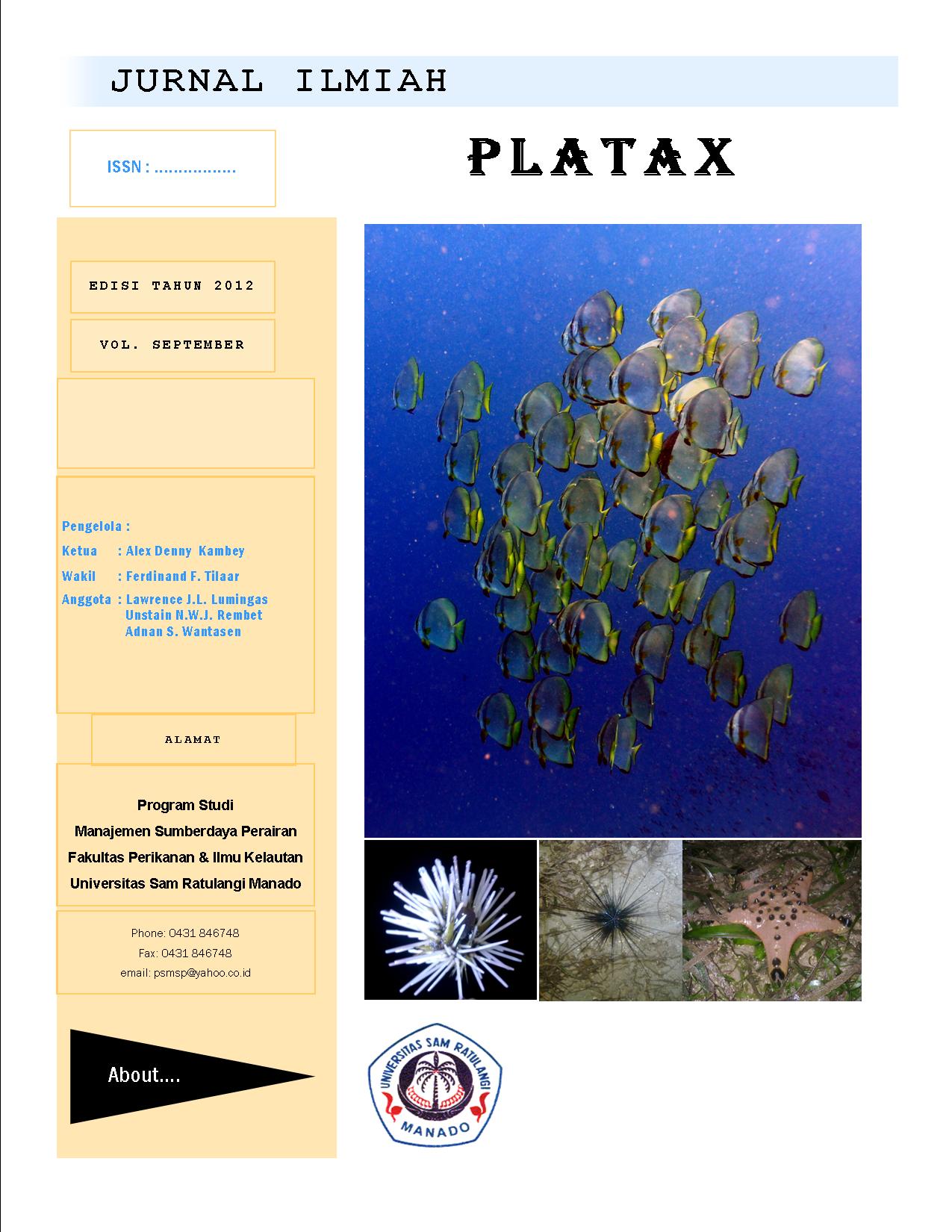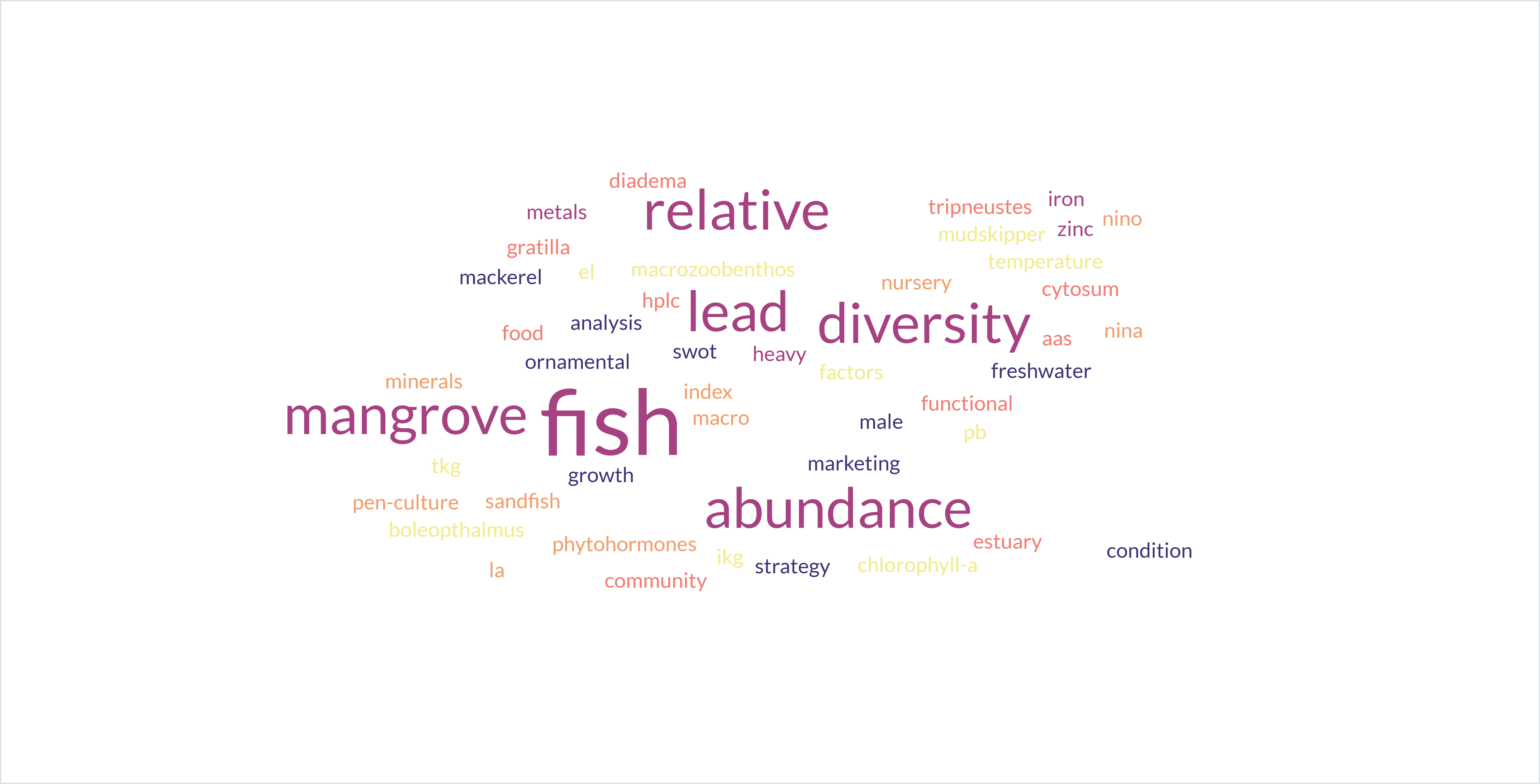Description of Yellowfin Tuna Processing
DOI:
https://doi.org/10.35800/jip.v12i2.59677Keywords:
Yeloowfin Tuna, Frozen Loin Tuna, PT. Harta SamudraAbstract
Morotai Island Regency has very abundant potential, namely tuna. The abundance of tuna fishermen's catches has become an opportunity to develop tuna loin processing, one of which is at PT. Harta Samudra Morotai. This research aims to describe the processing process carried out at PT. Harta Samudra. PT. Harta Samudra has 90 employees, 84 of whom are residents. Of the total employees, 11 are permanent employees and the other 79 are daily employees. The tuna loin processing process refers to SNI 01-4104.3-2006: receiving, beheading, butchering, trimming, gas room, chiller, retouching, packing, stuffing, and laboratory analysis.
Keywords: Yellowfin Tuna; Frozen Loin Tuna; PT. Harta Samudra
Abstrak
Kabupaten Pulau Morotai, memiliki potensi yang sangat melimpah, yakni tuna. Melimpahnya hasil tangkapan nelayan tuna, menjadi peluang dikembangkannya pengolahan Tuna loin salah satunya di PT. Harta Samudra Morotai. Penelitian ini bertujuan untuk mendeskripsikan proses pengolahan yang dilakukan di PT. Harta Samudra. PT. Harta samudra memiliki 90 karyawan, 84 diantaranya merupakan penduduk lokal. Dari total keseluruhan karyawan 11 diantaranya merupakan karyawan tetap dan 79 lainnya merupakan karyawan harian. Proses pengolahan tuna loin mengacu pada SNI 01-4104.3-2006 yakni receiving, deheading, butchering, trimming, gas room, chiller, retouching, packing, stuffing dan analisis laboratorium.
Kata Kunci : Tuna Ekor Kuning; Tuna Loin Beku; PT. Harta Samudra
References
Akerina, F. O., & Kour, F. (2020). Penerapan Rantai Dingin Serta Sanitasi Dan Hygiene Untuk Meningkatkan Kualitas Hasil Tangkapan Nelayan Desa Tagalaya. LOGISTA - Jurnal Ilmiah Pengabdian Kepada Masyarakat, 4(1), 1. https://doi.org/10.25077/logista.4.1.1-6.2020
BSN. (2006). Pengolahan Tuna Loin Beku. Badan Standarisasi Nasional.
BSN. (2015). Tuna Loin Beku. BSN (Badan Standarisasi Nasional).
Deni, S., Talib, A., & W. Laitupa, I. (2023). Studi Penerapan HACCP pada Pembekuan Ikan Tuna Madidihang (thunnus albacares) Studi Kasus pada PT. Harta Samudra di Kabupaten Pulau Morotai. Jurnal Sains Sosial Dan Humaniora (Jssh), 3(2), 74–88. https://doi.org/10.52046/jssh.v3i2.1758
Dinas Kelautan dan Perikanan Kabupaten Pulau Morotai. (2021). Data Eksport dan Produksi Ikan. Https://Mata.Pulaumorotaikab.Go.Id/.
Jati, A. K., Nurani, T. W., & Iskandar, B. H. (2016). SISTEM RANTAI PASOK TUNA LOIN DI PERAIRAN MALUKU (Supply Chain System of Tuna Loin in Maluku Waters). Marine Fisheries : Journal of Marine Fisheries Technology and Management, 5(2), 171–180. https://doi.org/10.29244/jmf.5.2.171-180
Nento, W. R. (2015). Studi Pengemasan Tuna Ekor Kuning (Thunnus Albacares) Di Cv. Cahaya Mandiri Desa Botu Barani Kelurahan Bone Pantai Provinsi Gorontalo. Jtech, 1(1), 55–59.
Palyama, A. F., & Dharmayanti, N. (2021). Indentifikasi Produktivitas Pengolahan Tuna Beku Pada PT. Maluku Prima Makmur di Kota Ambon. Jurnal Penyuluhan Perikanan Dan Kelautan, 15(1), 1–17. https://doi.org/10.33378/jppik.v15i1.233
Sofiati, T., & Deto, S. N. (2020). Profil Pengolahan Tuna Loin Beku di PT. Harta Samudra Kabupaten Pulau Morotai. Jurnal Bluefin Fisheries, 1(2), 12. https://doi.org/10.15578/jbf.v1i2.27
Downloads
Published
How to Cite
License
Copyright (c) 2025 Febrina Olivia Akerina, Femsy Kour, Christiani Melitia Radja, Loisa Vebiola Pesondolang

This work is licensed under a Creative Commons Attribution-NonCommercial 4.0 International License.
COPYRIGHT
Authors who publish with this journal agree to the following terms:
Authors hold their copyright and grant this journal the privilege of first publication, with the work simultaneously licensed under a Creative Commons Attribution License that permits others to impart the work with an acknowledgment of the work's origin and initial publication by this journal.
Authors can enter into separate or additional contractual arrangements for the non-exclusive distribution of the journal's published version of the work (for example, post it to an institutional repository or publish it in a book), with an acknowledgment of its underlying publication in this journal.
Authors are permitted and encouraged to post their work online (for example, in institutional repositories or on their website) as it can lead to productive exchanges, as well as earlier and greater citation of the published work (See The Effect of Open Access).






































